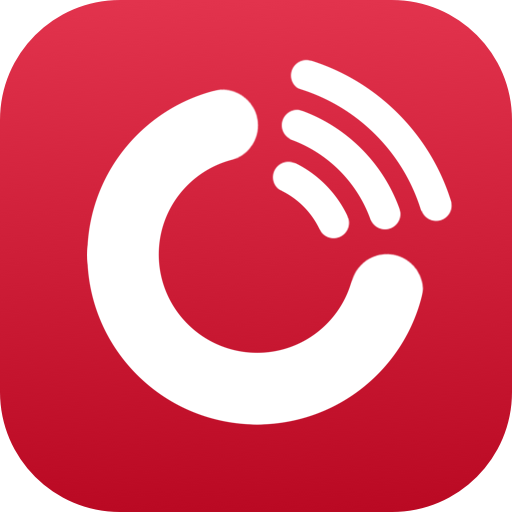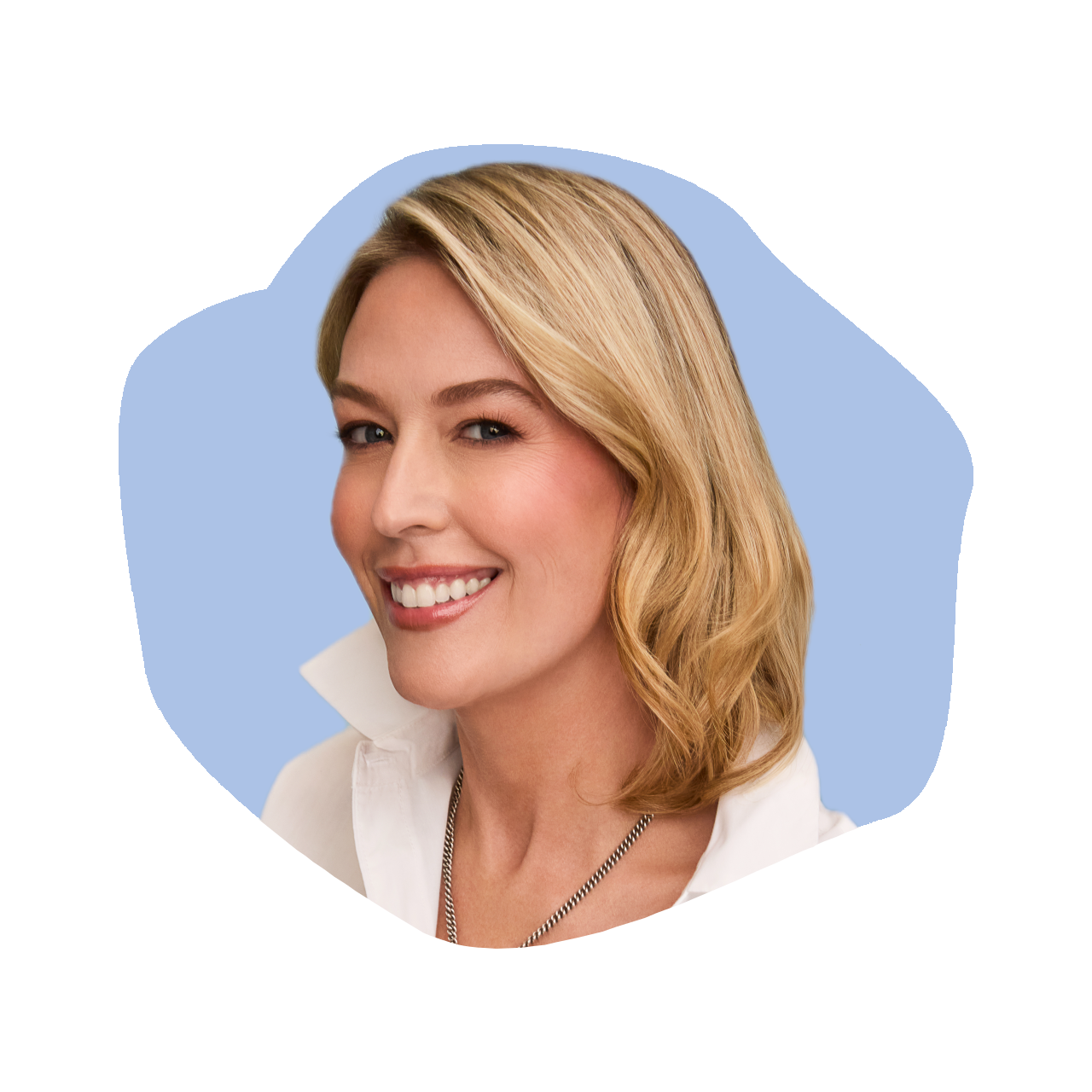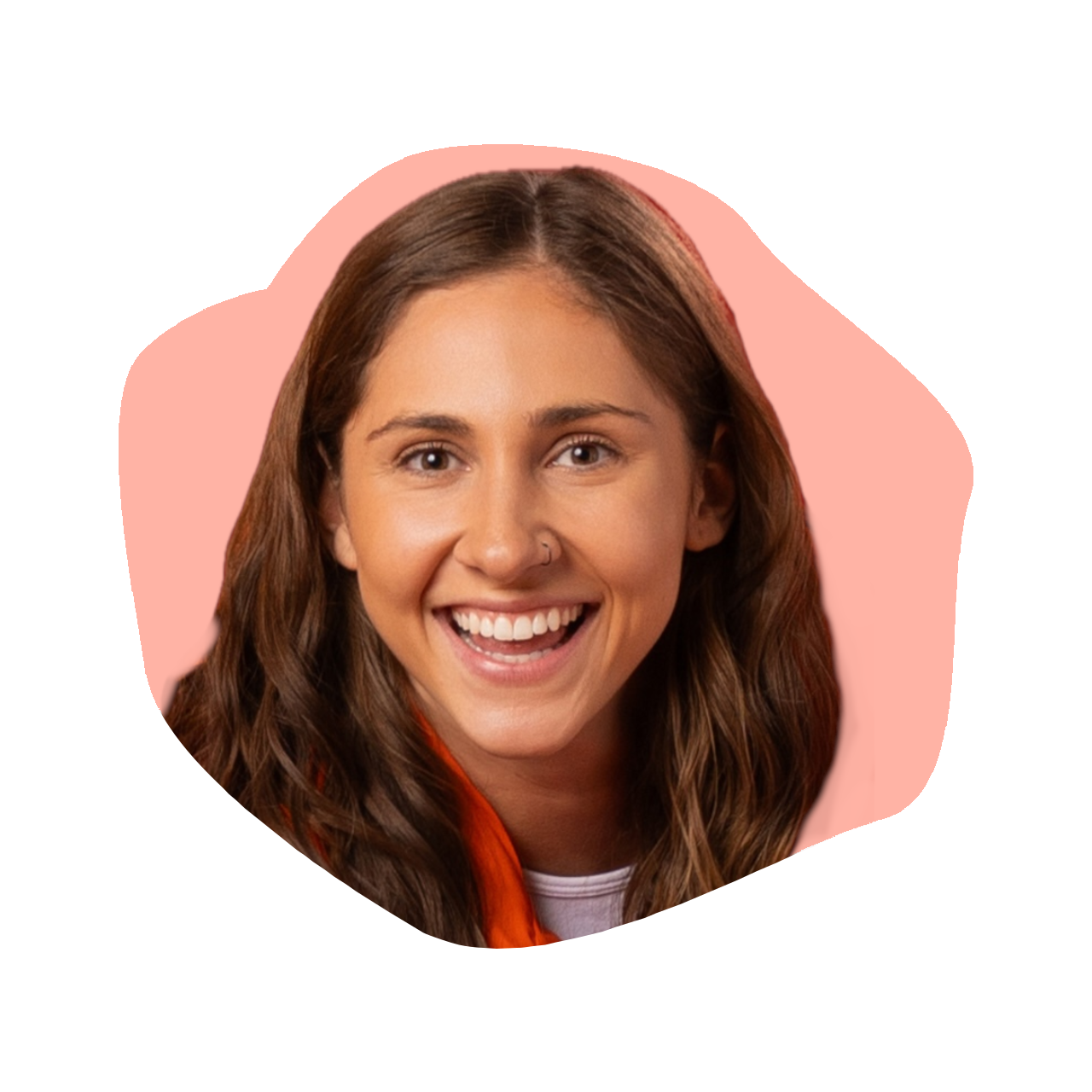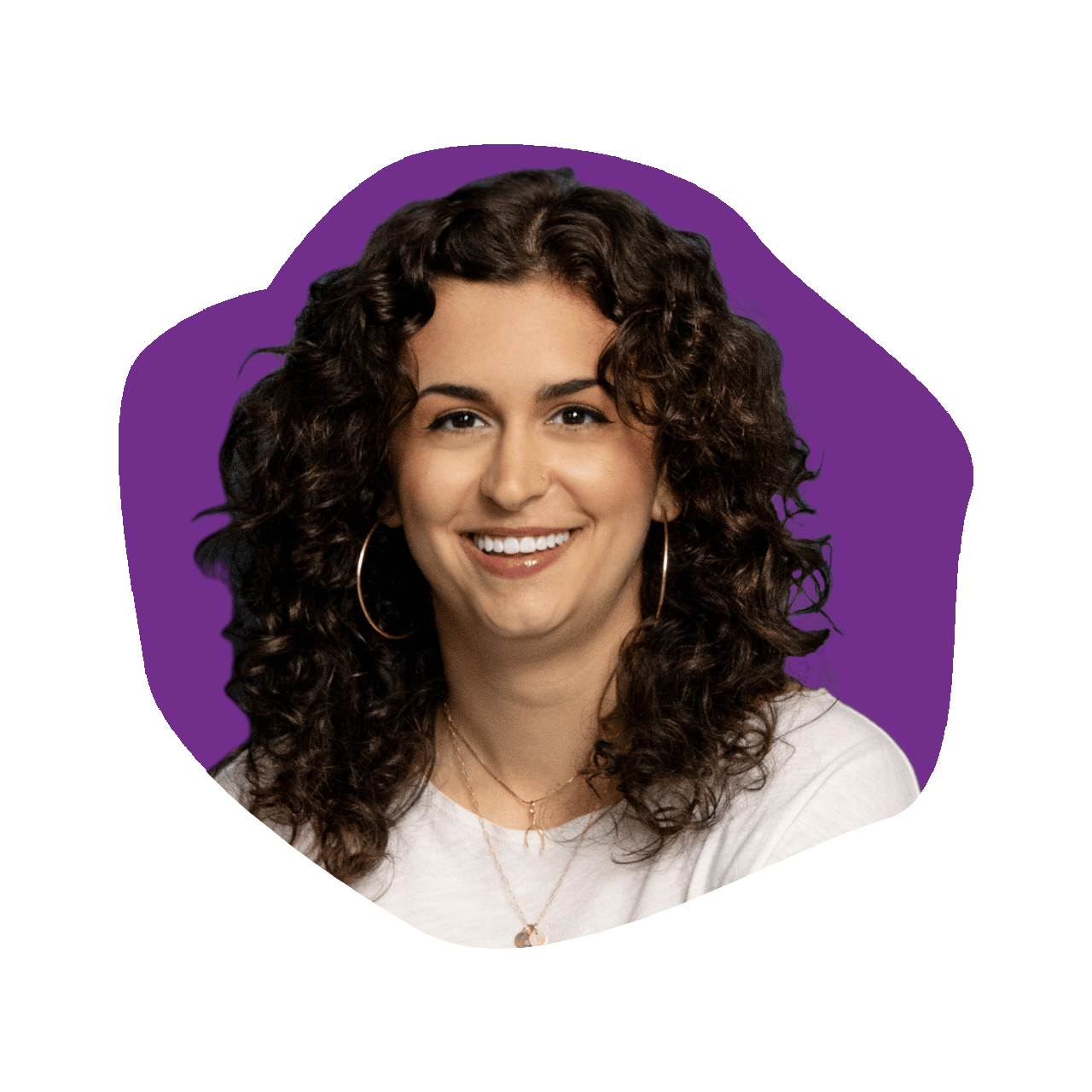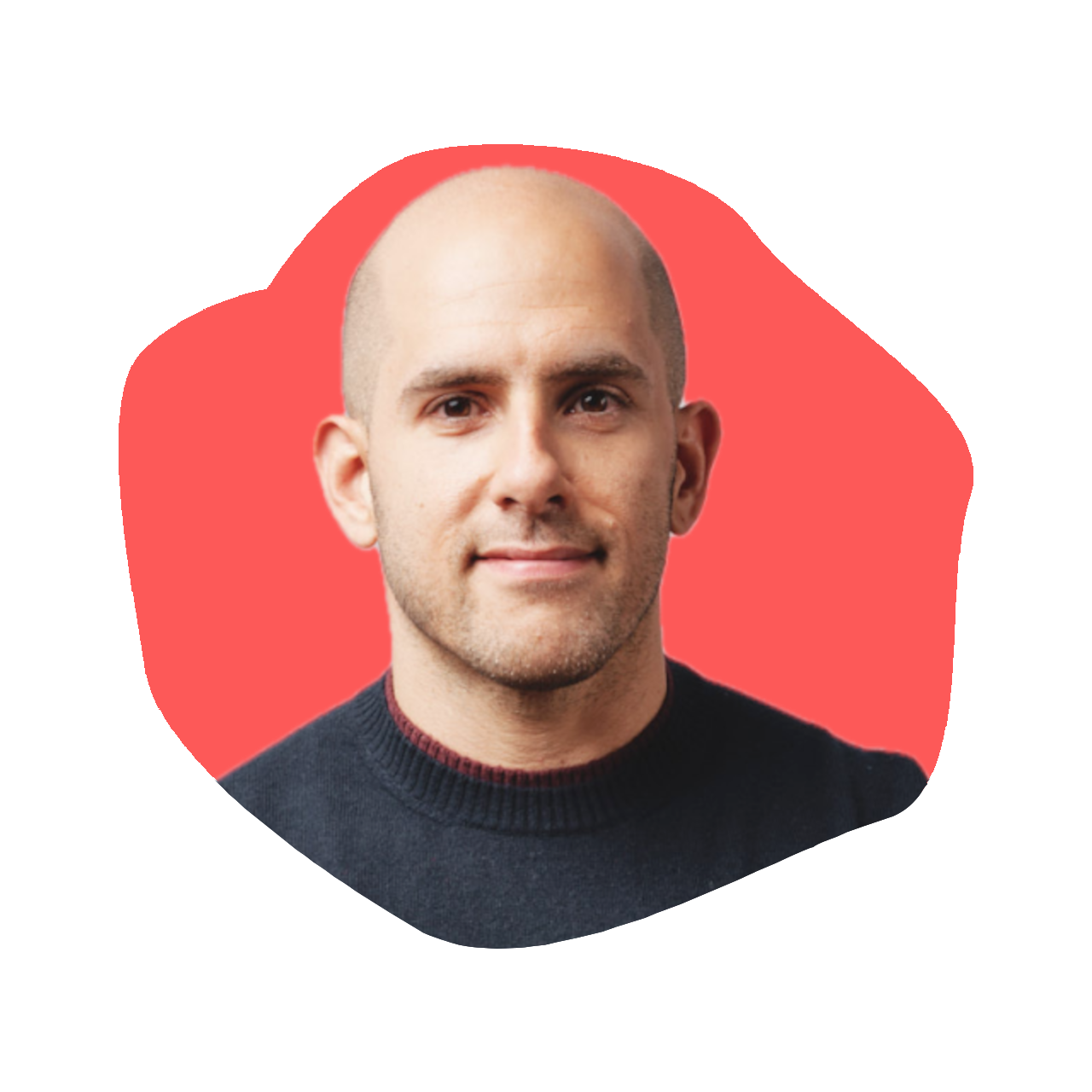Richard Moross: Founder & CEO of MOO
Episode 670
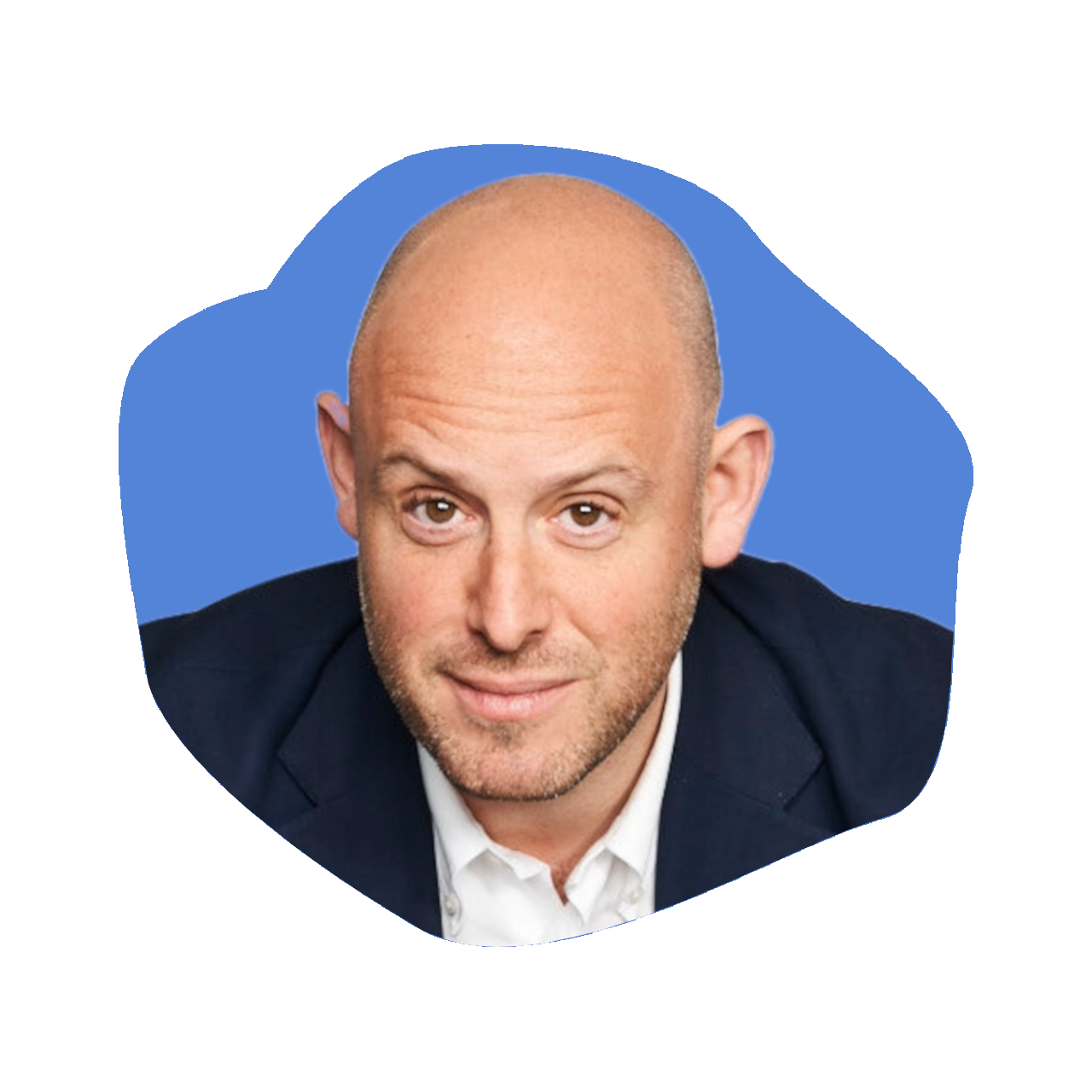
On this episode of The Kara Goldin Show, we’re joined by Richard Moross, Founder and CEO of MOO, the premium print and design brand that’s changing how people think about business cards, branded merchandise, and the power of physical branding in a digital world. Richard founded MOO back in 2006 with a bold vision: to bring great design to everyone and reimagine one of the most traditional industries on the planet.
During our conversation, Richard shares the origin story of MOO and how he spotted a massive opportunity in the $1 trillion print market. We explore what it takes to build a design-first, global business in an increasingly digital age, the role of branding and storytelling in physical products, and the mindset that’s kept him leading MOO for nearly two decades. We also talk about navigating challenges, staying creative as a CEO, and what excites him most about the future of design and customization.
Whether you’re a founder, creative, or someone obsessed with brand-building, this episode is packed with lessons on leadership, disruption, and going all-in on bold ideas. Now on The Kara Goldin Show.
Resources from
this episode:
Enjoying this episode of #TheKaraGoldinShow? Let Kara know by clicking on the links below and sending her a quick shout-out on social!
Follow Kara on LinkedIn – Instagram – X – Facebook – TikTok – YouTube – Threads
Have a question for Kara about one of our episodes? Reach out to Kara directly at [email protected]
To learn more about Richard Moross and MOO:
https://www.richardmoross.com/
https://www.linkedin.com/in/richardmoross
https://www.moo.com/us/
https://www.linkedin.com/company/moo-com
https://x.com/MOO
https://www.instagram.com/moo
Transcript
Kara Goldin 0:00
I am unwilling to give up that I will start over from scratch as many times as it takes to get where I want to be. I want to be you. Just want to make sure you will get knocked down. But just make sure you don’t get knocked out, knocked out. So your only choice should be go focus on what you can control. Control. Hi everyone, and welcome to the Kara Goldin show. Join me each week for inspiring conversations with some of the world’s greatest leaders. We’ll talk with founders, entrepreneurs, CEOs and really, some of the most interesting people of our time. Can’t wait to get started. Let’s go. Let’s go. Hi everyone, and welcome back to the Kara Goldin show today. I am so excited to have my next guest, Richard Moros, who is the founder and CEO of an incredible company called Moo. And I was sharing with him that I remember back in the early days, I think, shortly after they started in 2006 that I ordered some business cards from them, and I thought it was the coolest company, premium print and design company that’s reimagining how individuals and businesses present themselves. It’s a company that is actually Richard is based out of the UK, and he’s been able to expand worldwide, which is for a physical goods company, pretty incredible. So he’s really taking on the mission to challenge the million or sorry, trillion dollar global printing industry with bold ideas and brilliant design and cutting edge tech. I can’t wait to get into all the details of how he started this company and how he’s grown it to over 160 countries. So without further. ADO, Richard, welcome to the show. Thank you very much. Thank you for having me very excited. So let’s take it back which look, what was the itch you were trying to scratch when you started Moo like, what pain point, were you obsessed with solving?
Richard Moross 2:02
Yeah, I think you always need a an itch to scratch, no matter how late you are into the journey. I think in the beginning, I graduated from university and I had two kind of formative jobs. I spent two years working in a tech startup immediately after I graduated, and I spent two years working in a design company. And Moo is the sort of love child of those two worlds. You know, in the tech company was all about democratizing access to things and breaking down boundaries, and being kind of a global business and and being for everyone. And the time in the design company. They were all about, you know, beautiful things and expensive things and charging a lot for services. They were both great companies, amazing experiences, but Moon was kind of much more about democratizing design, giving more people access to design, using technology to make design less foreboding, less expensive and more accessible for people. So it kind of came out of those two experiences, a combination of those two expresses that I had.
Kara Goldin 3:06
So this was your first startup, actually creating first and last, your first and last. I’m so curious, did you actually say I’m gonna go start a company, or did you think this was an idea that you wanted to see happen? Well,
Richard Moross 3:22
yeah, I have to admit, and I have admitted this in public before, so it’s not an exclusive, but the first idea was very different. And you’re right, it wasn’t, I wasn’t. It wasn’t. I wasn’t really thinking about starting a company. I was thinking about starting an idea. And the original idea was not Moo. The original idea was called pleasure cards. So I’m just waiting for your facial expression reaction exactly.
Kara Goldin 3:44
I was gonna say something, but we’ll, we’ll leave it at that, but I
Richard Moross 3:50
must explain what it was so that you said that you have it. So pleasure cards was basically a business card for your social life. It was for young people who wanted to give out their number or email address or, you know, put pictures on cards and much more of a social product, consumer product. But naturally, it was doomed because of its terrible name and all sorts of other reasons we can explore. But, yeah, that was the original
Kara Goldin 4:11
idea. Very interesting. So I was, I will say, I mean, there was, definitely, I’m thinking, in the early 2000s there was a whole conversation around print is dead. No one is gonna not only in the industry that that you chose to create a company in, but books and I mean, everybody was saying, it’s all gone right. It must have taken a lot of courage to go against that thinking, to say, I don’t necessarily agree, and I’m going to go try, can you talk to me about that time and the white space that you felt?
Richard Moross 4:49
I think there was definitely a time, and there still is a time that there’s a digital technologies are amazing. They’re all pervasive, and they are transformative and changing the world that we live in. In the way that we live in that world, but I think that increases the demand for physical things. I think, you know, the pandemic increased our appetite for physical interaction and seeing people, and created more value in those physical touch points. So, I mean, now I can say that now with hindsight, but I think back in 2006 2007 we were trying to be the physical printer for social networks. You know, we were coming up at a time where that world was exploding, but people still live in the real world. You know, they still have friends in the real world, and they want to make friends in the real world. So having, you know, a product or products that I think we original tagline or something. Was like, we love the web, but you can’t put it in your pocket. And you can kind of put it in your pocket with your phone. But, you know, it’s making those things tangible, making them real and and making them a bit fun as well, I guess, back in the day. So
Kara Goldin 5:55
the early days, how long was it before you actually switched to Moo, then
Richard Moross 6:02
probably too long. So pleasure cars was a short lived exercise, which I look back on fondly now, but was very, very difficult. And it was, it was hard coming up with the idea of being very passionate about it, and then it just failing, failing to get off the ground, failing to generate any real traction, any real revenue. So I think it was about 18 months from raising some money, leaving my job, to realizing this is not going to work. People aren’t buying this. People don’t want it. And it was time to pivot. It was time to find something else to pursue. And I guess the pivot was, how do we take the things that are good printing? We can do that really well. You know? We’ve got some design creds here. We’ve got some ways to work with the web and work with these companies on the web. And it, you know, moo was the kind of the thing that was born afterwards, and threw away all the bad stuff and focused on the good stuff. And it’s been a roller coaster since then. So
Kara Goldin 7:00
where did the name come from?
Richard Moross 7:03
Well, it wasn’t pleasure cards, so it instantly had an advantage over the old name. I’ll tell you the truth. There was a like, a mood board or a brainstorming whiteboard with a bunch of different names on it, bunch of different options. And I liked mood because it was kind of onomatopoeic. It didn’t mean anything rude or weird, and it was friendly, and it had two lucky O’s, like Facebook and Google and Yahoo. So I thought two lucky O’s, that’ll be me fine. And it was owned by a guy called David Blattner, who lived in Seattle, who wasn’t really using it commercially. And I got in contact with David, and there was a possibility of buying the domain name. And I can tell you the whole story about how we did that, which was a fascinating, other sort of tangent in the story. But the idea that we could get it, the idea it was short and memorable, people would talk about it, it was kind of weird. So I liked
Kara Goldin 7:52
it so interesting. So the early days you launched, how many skews, what was really the focus. And then when did you go from that initial set to branch out into what you do today? Sure, so
Richard Moross 8:09
we started with one product. We had this skinny little business card, which was a hangover from the pleasure cards days. And we partnered with lots of different companies. Our first partner was a company called Flickr, which was a photo sharing site very popular at the time, and we were basically just helping people who were members of Flickr print their photos on cards and hand them out. A lot of photographers and so on, bought us so we had traction there. We then launched stickers and note cards and greetings cards and all sorts of other things. In that first year, I think we launched about 10 products in the first 12 months. But the real step change came when we stopped. We were inventing a lot of weird products, you know, formats that people had never seen before. We used before. They were gimmicky. They were kind of interesting and different, but no one was looking for them. No one was shopping. Oh, I need this weird, gimmicky, shaped card that no one knew they wanted. But when we launched business cards, the company went just grew 100% almost overnight, and kept growing. So it was finding a rich vein of opportunity in a in a space where there was already demand, there was already people buying, and we had a product that was really differentiated. We had very high quality materials, we had beautiful designs, we had a great service. So we were able to get to that product market fit very, very quickly in that in that particular space, and that’s still our biggest selling product, even today, even in the world of zoom and other technologies, people are still meeting in person. And this works remarkably well. I’d say this. My cards work very, very well. You don’t need a Wi Fi connection, you don’t need a phone. You can just give your details to some that’s
Kara Goldin 9:42
so true. So and then, at what point did you move beyond that?
Richard Moross 9:46
I think we just kept on rolling out new products. You know, we at our heart. We do, you know, we do three things. We design products. We love designing products. We absolutely obsessed with making new products and finding great products to sell. So. So that’s always going to be part of our DNA. We do all the manufacturing. So we print our own things, we send them into customers. We’re vertically integrated, and also we own all of our own technology, so we’re serving customers direct to customer, and we’re fulfilling orders and doing all the software. So we’re a product centric business. We love doing it, so, you know, we never want to stop doing it. We want to keep doing that. It’s, it’s our real passion is making, is making great products.
Kara Goldin 10:26
So everyone has a humbling moment in the especially in the early days, but I feel like it’s a it’s a timeline, it’s maybe it’s a the highs and the lows, right? And that’s entrepreneurship for sure. Do you remember a super humbling moment in those first few years where you were just like, I don’t know if we’re gonna get rid of this?
Richard Moross 10:49
I’ve had several. I’ve had several. I mean, I think you need them, because it’s a bit like the pain you feel when you go to the gym. It’s building muscle, it’s building strength and and I think creativity loves the constraints and the challenges that you know get thrown thrown at you. So maybe would would have otherwise, have told stories about pivots and things that led to positive things. But the pandemic was really the hardest thing we’ve ever had to go through. You know, we went from we were doing something in the region of $15 million a month, every month, bang, bang, bang, growing, growing, growing. And then we went down to something like $3 million overnight. You know, we had March 20, and we’re about to anniversary those, those months, five years ago today. And you know, when people stop going to conferences, stop getting on planes, stop going to meetings, all of our products are designed for in person interaction. So we had a rapid halt. We had to rethink the business. We had to re imagine the business, redesign the business, refactor all of our cost structure and get through so, I mean, that was the most difficult of all difficult situations that we’ve had,
Kara Goldin 12:02
and did you feel like it picked up during at what point during the pandemic? I guess,
Richard Moross 12:08
yeah, it took about six months until we saw some green shoots. So, I mean, we had set up in our in our kind of dashboards, things like the Google transport data to see if people were traveling by train, if people were taking taxis and going places, we would see a correlation between, you know, places being unlocked, you know, being opened up and locked down, being reduced, and sales going up. You know, you’d see leading and lagging indicators that were all around, you know, kind of public transport data and stuff like that. So about six months until we took a breath, and then we built the business back up to almost the sort of same size over the next two or three years. So it’s been, it’s been an incredible, incredible journey, but the first few days were just unbelievable, unbelievable learnings. Was
Kara Goldin 12:59
it always your dream, once this, once move started really kicking into gear, that it would be a global company as it is,
Richard Moross 13:09
I think we were lucky. I had a lot of really good people around me. And I think one of the principles that we took very early on into all of our decision making was be completely global, you know, geographically agnostic. You know, we didn’t think about, oh, we’re British companies. We just sell in the UK, was all we were partnering with Flickr there in the US. Let’s be a global company. Let’s have prices in lots of different currencies. Let’s have a flat rate shipping anywhere in the world. Let’s, let’s not make the geography boundaries an issue for for anyone. We’ll figure that out later. And that served us very well. So we went, you know, despite being a UK based business, initially, we’re very US centric. Today, we had about 40% of our revenue coming in from the US, I think, in the end of the first year or the second year, and we built on that, and the US is now about 83% of our of our business. So we’ve definitely continued to invest and think about how we grow internationally, but particularly the US has been very strong for us.
Kara Goldin 14:10
So the majority of your business, as you just mentioned, is in the US. I bet you see a lot of interesting data points, though, everything from different countries, maybe have different opinions about what should be on the business card and what shouldn’t be on the business card. Is there anything that has come out to you as as kind of glaring in some way, or, I mean,
Richard Moross 14:42
there are huge, sure, there are huge cultural differences professionally in all different countries. There are specific cultural differences around business cards, particularly in in in Asia, and, you know, some, some well, well understood cultural norms around how cards are exchanged. And. Received and so on. I think in the early days, we were giving a lot of cards away for free. So we saw a lot of people put very weird things on cards, which we were not allowed to print at times. But that all made for an interesting experience for us as as business owners to have to figure out what you would and wouldn’t print. And we do, on occasion, decline printing things when, when I think our customers want to make something that doesn’t necessarily align with our values, but no, I mean, for the most part, being a US centric business. It’s a very business friendly culture. People like to do business card. Whatever we’re making, we make a lot of different products, you know, whether we’re making cards or whether we’re making, you know, like a water bottle or a notebook or postcards or flyers or whatever it might be. Americans are just, they tend to buy in greater numbers. So the Europeans are, you know, you know that they’re buying a few little cars. Americans, like, I’m going to really make a go at this. I’m buying 200 cards or 400 cars. I’m, you know, they may just be starting out. It’s an amazingly entrepreneurial country. 400,000 new businesses started every month in the US. So we’re well placed to serve them with their however many cards they needed, going to them very, very quickly as well, which is something that the US folks do love, is fast service.
Kara Goldin 16:18
I have my own group of people that I can, that I can look for trends with. So I have one on the low end millennial and three Gen Zers. And I’ll, I’ll tell you, I mean, they’re, they’re more obsessed with business cards than than I’ve ever seen Gen Xer or millennial be. So I think you are probably seeing a lot of trends, especially with this Gen Z audience coming up. Is there anything that sort of has highlighted to you as being something that is unique,
Richard Moross 16:54
not something that I’ve seen directly, but it’s something I’m going to go and look for now that you mentioned it, because I think it’s fascinating. I mean, we used to look at things like titles, business titles. We noticed through various recessions that, you know, titles like consultant tend to go up and advisor and founder, you know, the you know, economic conditions can drive change, massive changes in profession. So it’s quite fascinating. Think about how what people actually end up putting on their cards. Can tell you what I can tell you about where the where the markets going, what’s happening. So I don’t have that data to hand. I wish I did now, but no, we used to look at it quite a lot. We’ve done some some research, and we’ve published some of that stuff in the past, which I’m sure is online, but yeah, there’s definitely movement in titles. A lot of AI written on people’s titles now, I’m sure, but I’ll have to go find some some data on it to look at it.
Kara Goldin 17:52
So you mentioned AI. I’m so curious. So how does AI fit into digital tech within your company?
Richard Moross 18:02
Yeah, I think it’s an essential component in moderation for a business like Moo. We pride ourselves on the service that we deliver, not saying for a second that AI can’t support with that, but we’re available on the phone. We’re available on chat, email, and we are agents. Are able to use tools in the same way that you might use Excel to, you know, format some numbers. We use AI to help us maybe format and structure inbound information so that we can organize it and response people. But we think that a human centric experience much the same way as we believe in meeting people in person, we believe that being available as humans to talk to other humans if they need to talk to us, is very important. So we use it as a tool. It’s not a I don’t think we have any kind of significant leverage of AI in our business today. So
Kara Goldin 18:53
if you had to launch Moo again and 2025 is there anything that you do differently as you think back on, on the days, maybe there was something that you thought for sure is going to be a huge home run, and you wasted just too much time focusing on, yeah,
Richard Moross 19:15
I could, I could tell you one, one story we did at one point. Think that, you know, moo had strengths in design. It had strengths in its customer relationships. We had e commerce, we had lots of things. And I think we got stuck on the idea that maybe we were going to do websites or help people with logos and do other, you know, supplemental services, adjacent services to the business that we’re in. And we, we’ve probably flirted with that area a bit too much. And I’m not saying that areas are interesting or doesn’t have potential, but I think you can, particularly when you’re growing and you’re a scale up business, you can be distracted by opportunities left and right. And actually, the main thing is to keep the main thing, the main thing right. Focus on the. At your core business, making that better and better. And we were, we were, by no means at that point, asymptoting, and we didn’t need to find growth from other areas other than our core business. So that was a distraction and probably a waste of time in some regard, but again, a learning and helps you. You reminded of that when you’re looking at opportunities, when people calling you to try and do things and yeah, it was, was a distraction.
Kara Goldin 20:28
So you’ve shipped to over a million customers, well over a million, I would guess, way over a million. You’ve grown a team over the last 20 years, you’ve been a CEO of this company for almost 20 years. At this point, obviously, culture is super important for you. What are the one or two non negotiables as you think about sort of the journey of building the company, what you’ve seen where you really feel like that’s something that you actually you have to have within the company, or or you need to fix it, or something you know that that’s a problem? Yeah,
Richard Moross 21:10
no, no, it’s, it’s, it’s one of those things where you know it when you see it, when you’re a small company, you’re kind of, you’re feeling out your values and your culture early on, and I was super interested to talk to people who were at mood 10 years ago or 15 years ago, to see whether they felt the culture was the same. You know what was the same about it? But I think your values, they’re not your values if you don’t hold people accountable for, you know, betraying them or acting against them or not not living them. So we have a, you know, our performance management process is based on your performance and your, you know, your values and how they align with what we do and what we believe. So I think that’s just critically important in any company, no matter how big it is. It’s probably something I wish we’d done earlier. At no we probably only crystallized, you know, what we believed and how we wanted to do things. We about six or seven years in, but we were, we were growing very quickly at the time, and we were still, you know, little whipper snappers, you know, upstarts and hadn’t, hadn’t kind of grown up enough to build those things out. But yeah, culture and value is super important. So when you
Kara Goldin 22:27
look at building a brand, and you’ve built an incredible brand today, you’re also you sit on some boards. I always say that the board work that I do as well, it really helps me to kind of not just provide perspective, but also see maybe what I’ve missed right outside of my own company. I think it’s, it’s incredibly important for learning for for any CEO, what’s the biggest mistake you see execs making when you think, when they think about scaling a brand, and if you have to kind of dial it back for them,
Richard Moross 23:11
knowing what you Yeah, it’s difficult. Let me, let me just explain for some context, the experience I’ve had outside of my new and maybe why I did it. I think when I was about 3047, now, when I was about 13, I was running this company was growing very quickly, and I really felt I didn’t know what I was doing. You know, I had raised money, and I’d been very lucky, and I had a great team, but I felt like I lacked, really, any experience in the world that I was, you know, you said I’ve been a CEO for 20 years. You know, I have, but the job has been literally a different job every year. So how do you grow yourself? How do you expand your own learning when the day job is you’re in the same environment? So I did a few things back then. The first thing was I found a mentor, which was an amazing experience. We did that for many, many years. I joined the Young Presidents Organization, it us organization with with roots in the US, but with global reach. And I joined a public company board as a as a director, as a non exec director. And I did that for about for about 10 years. So I think for me, the experience of being in public companies and being at other boards is you get this fantastic 10,000 foot view. You’re able to see the you kind of see the matrix, you know, you can see what’s going on, and you can help advise the people running those businesses, or present your opinion and your perspective to other members of the board, to the executive team. I think one of the real skills of being an executive and a non executive is the ability to zoom in and zoom out and zoom in and zoom out. And I think that when you’re a non exec working with an exec, helping them zoom out and see things from your point of view and and sometimes in bigger companies, they get very far away. I mean, I noticed it with myself. You’re very far away. From the product, you get very far away from the customer. And sometimes, as a non exec, you have to help on an advisor, or in any capacity like that, where you’re working with senior leadership, is help them zoom in, or give them permission, or help them to find a way to zoom in on a problem, on a customer you know, have they used the product recently? Have they? Have they had that experience? Have they looked, have they gone and experienced what a competitor does? Because you can get lost in the Excel spreadsheets and the PowerPoint and the team meetings and all other things, and it’s a thing we have to keep reminding ourselves, is like going back to the gym, you know, like you can be very successful, but you know, you’ve got to work that that muscle, and remember where you came from. Remember where the product came from, remember the actual customers that buy it? So I suppose those are the sort of things I that I look to do. Yeah,
Kara Goldin 25:49
definitely. And I think it’s, it’s focusing on the consumer, but also focusing on the team too, right? So you can see little data points along the way, but things like culture, things like, it’s not just about top line growth, but if you don’t have the top line growth, then you start to kind of wonder, what else is is missing in the company that maybe you’re not seeing as well. But yeah, I think it’s it’s so interesting what I’m part of YPO that you mentioned as well. And what I’ve been able to gage from my experience being part of that too is that it doesn’t matter if you’re in the same industry or not. There’s a lot of key similarities that you go through that is really fun to have that other experiences to help you think about things for sure. So when you think about Moo and kind of the future, what are you just obsessing about right now that you’re so excited about, about your company? Well,
Richard Moross 26:51
it’s more what I’m worried about than what I’m excited about, and but that sort of excites me. You know, the challenges are interesting, the problems to solve are stimulating. So you know, how do you grow the scale business that has to have factories and develop its own software and make its own product? That’s an ongoing thing, and it gets more complicated as it gets as it gets bigger. So I’m, I’m excited about that. I’m sort of excited about finding our place in the in this new digital world. You talked earlier about the changes in people with thought no one would ever buy a book again. And yet, books are still an incredibly important physical books are still an incredibly important part of my life anyway, and of the lives of lots of people. Things like vinyl are coming back. I think that’s a fascinating phenomena. When you can, you know, download any song in the world ever, you know, touch of a button, this routine of people who still want to go to a record store and buy something that’s difficult to play and you have to be in a certain location, I think it’s amazing. So I’m fascinated with building products that will help brands reconnect with their customers or their employees, figuring out new ways to do that in a super scalable, international way, beautiful design, high quality products. I suppose the thing that’s most difficult about what I’m doing, and maybe most exciting, is, how do you do that in a really sustainable way? You know, if you’re going to make a lot of these products, how are you going to make them in a way that they can be disposed of responsibly, or they’re going to last a long time. So you know, one of the foundations of our product strategy is this belief in sustainable impressions. How do you help companies make these long, lasting impressions with their customers or their employees? Or how do you make a product out of a material that can be recycled or thrown away and composted? So those are meaty, new, interesting challenges, which we we’ve obviously thought about for a long time, but it’s such an important tenant now of our strategy that and we’re having to tackle it in a number of different places, but it’s an exciting thing. And I’m, I’m, I’m sort of jazzed about trying to figure it all out again. I
Kara Goldin 28:56
always call the entrepreneurship journey the puzzle, right? And I think that that’s the exciting part, but you don’t have the picture on the front right, so nobody gave it to you, and you’re just continuing to build on it. And it is fun, but some days it’s super challenging and hard, and I think you have to be willing to sort of take on that puzzle every day, which clearly you are so Richard, thank you so much for an insightful interview. Everybody needs to go on and order from Moo we’ll have all the info in the show notes, but thank you for sharing your wisdom with us, and thanks everyone for listening too. So incredible, incredible design beyond business cards, as Richard mentioned, they do all kinds of custom printing and design projects, so definitely check it out. So thank you, Richard and the company, again is called New Thanks again for listening to the Kara Goldin show. If you would please give. Us a review, and feel free to share this podcast with others who would benefit. And of course, feel free to subscribe so you don’t miss a single episode of our podcast, just a reminder that I can be found on all platforms. At Kara Goldin, I would love to hear from you too. So feel free to DM me, and if you want to hear more about my journey, I hope you will have a listen or pick up a copy of my Wall Street Journal, best selling book, undaunted, where I share more about my journey, including founding and building. Hint, we are here every Monday, Wednesday and Friday. Thanks for listening and goodbye for now. You.




